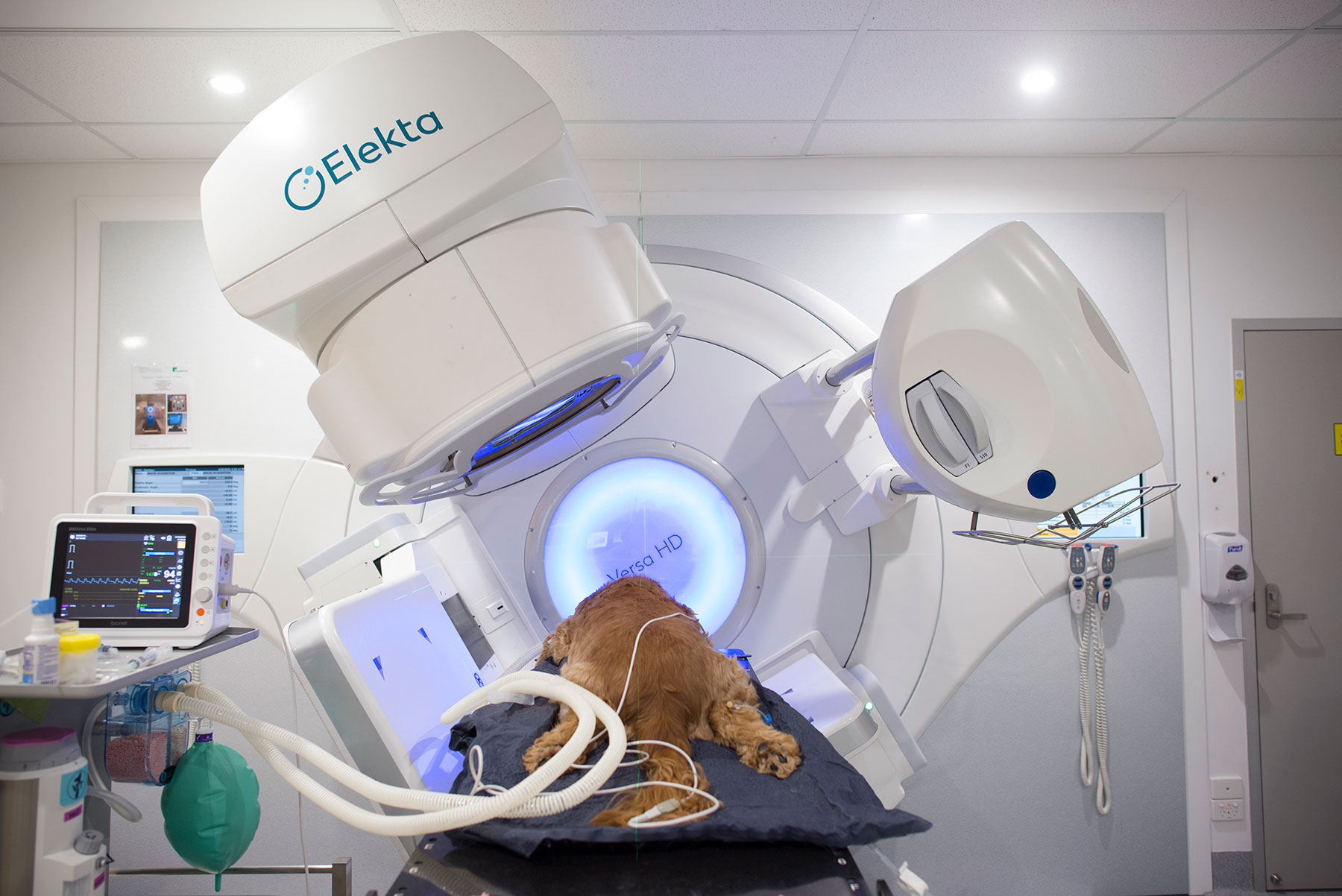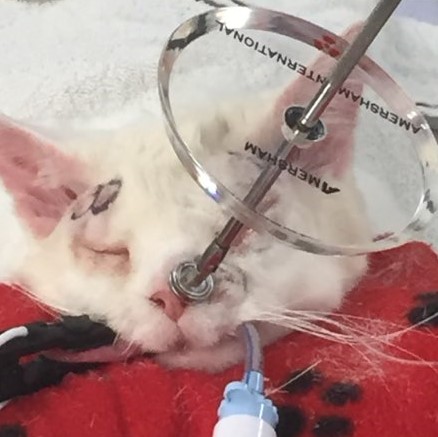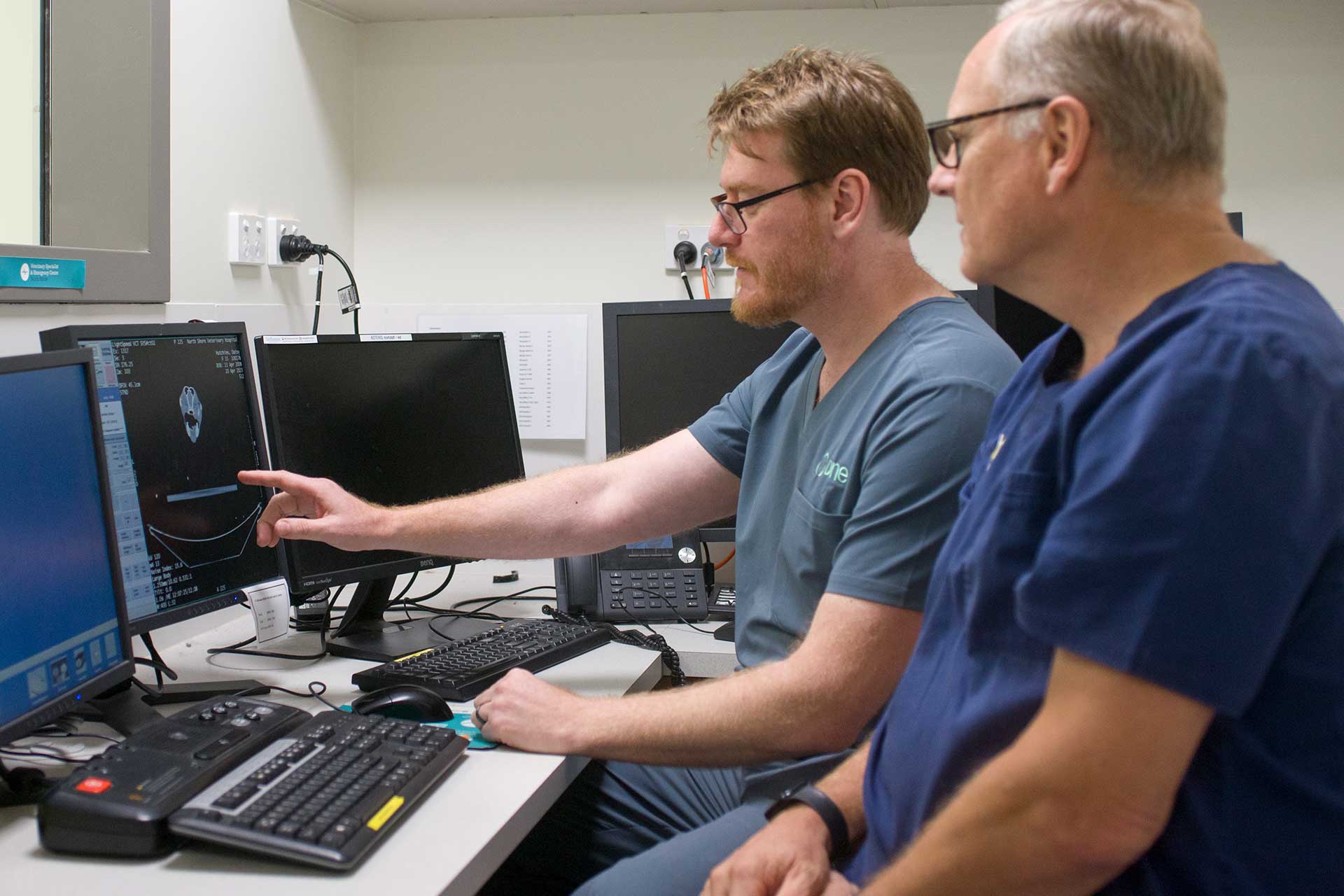Radiation Oncology
Simply, this is the use of highly energetic beams of x-rays or electrons to kill or sterilize cancer cells. There are several different types of radiation therapy used in both people and animals with cancer. The decision on which type to use depends on the type of cancer being treated and on access to the right equipment and/or highly trained specialists. At ONE we provide the full range of radiation oncology treatment options including:
Stereotactic radiation therapy (SRT)
This involves the very precise targeting and delivery of a therapeutic dose of radiation to a defined tumor volume whilst sparing normal tissue structures. A course of treatment involves between 1-5 fractions administered daily, allowing for the treatment course to be completed within 5-7 days in most instances. Among the many advantages of this treatment option are less time away from home, fewer anaesthetics, fewer and less severe acute adverse effects, and less expense.

Conventionally fractionated radiation therapy (CFRT)
This form of radiation treatment is also very targeted but delivers a therapeutic dose over a more protracted 16-20 fractions. Smaller doses per fraction are used allowing us to manipulate the specific radiobiologic properties of various tumor and tissue types to our advantage. This is important to minimize any negative effects of treatment in certain anatomic regions.
Wide Field Irradiation (WFI)
Radiation therapy, like surgery, is generally considered a localized treatment option used to treat focal disease confined to a specific anatomic location. However, it has been used as a component of systemic therapy for various heamo-lymphatic malignancies. In dogs, total body irradiation (TBI) administered in two half body fractions has been used to treat generalized lymphoma. For a subset of dogs with this disease a significant survival advantage has been reported.
Strontium radiation therapy (Sr-90)
This is the direct application of a radioactive source onto a superficially located skin tumor. It is specific for early-stage disease that has not penetrated deeply into underlying tissues and is commonly used to treat feline sun induced skin cancer. It usually involves a single anaesthesia and is followed by mild dermal changes including focal hairloss, redness and some dry scaling or crusting which resolves quickly.

Radiation treatment goals can be defined as,
Definitive Intent
Where there is a reasonable expectation for either long-term tumor control or cure, all the above radiation regimens can be utilized as either the sole therapy or integrated into a more comprehensive multi-modality cancer treatment strategy to effect best possible outcome.
Palliative Intent
Where a tumor is impacting quality of life significantly through either pain or physical dysfunction (airway or bowel obstruction), and where long-term control of the disease is not likely, radiation can be administered with a palliative intent to improve patient comfort and well being albeit for a shorter time frame.



